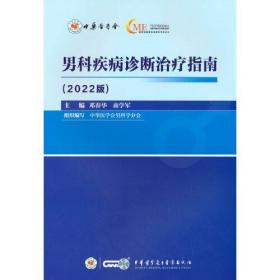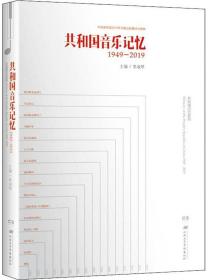
国际结算(英文版)
¥ 13.25 3.8折 ¥ 35 九品
仅1件
北京东城
认证卖家担保交易快速发货售后保障
作者许南、张雅 著
出版社中国人民大学出版社
出版时间2013-09
版次1
装帧平装
货号A1
上书时间2024-12-27
- 最新上架
商品详情
- 品相描述:九品
图书标准信息
- 作者 许南、张雅 著
- 出版社 中国人民大学出版社
- 出版时间 2013-09
- 版次 1
- ISBN 9787300176710
- 定价 35.00元
- 装帧 平装
- 开本 16开
- 纸张 胶版纸
- 页数 286页
- 字数 435千字
- 正文语种 英语
- 丛书 经济管理类课程教材·国际贸易系列;国家双语教学示范课程英文教材
- 【内容简介】
- 《经济管理类课程教材·国际贸易系列·国家双语教学示范课程英文教材:国际结算(英文版)》是2010年度国家双语教学示范课程“国际结算”的英文教材。本书的一大特色在于,它既可以独立使用,也可以与该建设项目的另一工作成果《国际结算》(中文版)配套对应使用。这在目前国内已出版发行的《国际结算》教材中尚属凤毛麟角。《经济管理类课程教材·国际贸易系列·国家双语教学示范课程英文教材:国际结算(英文版)》由国际结算导论、国际结算中的票据、国际结算方式、国际结算中的单据、国际结算业务管理五大模块组成。导论模块重点介绍本书的基本框架、学习内容和基本理论;票据模块展示了汇票、本票、支票三大票据的法理、构成要素、票据行为;结算方式模块介绍了传统的结算方式汇款、托收和信用证后,根据当前国际结算业务信用证结算比例逐步下降,商业信用结算占比逐年增大的新特点和新趋势,介绍了保函、备用信用证、保理、福费廷等新型、带有融资特性的结算方式。单据模块先阐述和分析了汇票、基本商业单据商业发票、运输单据、保险单据,然后对其他单据做了系统而深入的介绍与分析。为避免与票据模块重复,本模块主要是从单据审核的角度介绍了汇票。审单审证作为国际结算课程的难点,在第十一章有专门介绍。本书还对国际结算融资、国际结算业务风险等内容进行了分章阐述。教材涵盖了包括INCOTERMS2010,UCP600,ISBP681和URDG758等在内的国际结算领域最新的国际惯例和规则。
- 【作者简介】
-
许南,男,经济学博士,湖南师范大学商学院副教授,硕士研究生导师,MBA导师,“国际结算”国家双语教学示范课程负责人;“挑战杯”全国优秀指导教师,湖南省青年骨干教师,湖南省青年教师教学能手;曾在德国福伦斯堡大学作为访问学者研修一年,为德国高校本科生和硕士生用英语讲授“金融学导论”、“国际贸易融资”课程。任教课程被遴选为校文化素质课精品课程、校双语教学示范课程、校精品课程和国家双语教学示范课程。出版专著2部,在《管理世界》、《财贸经济》、《教育与经济》、《金融论坛》等权威和重点刊物发表学术论文20余篇,多篇论文被中国人民大学报刊复印资料全文转载。主持国家本科教学质量工程项目1项,主持省社科基金项目、省软科学项目、省教育科学规划项目、省教学改革研究项目、省研究生教改项目7项,主要教学科研领域为国际贸易学和国际金融学,主要研究方向为国际支付、国际贸易融资、商业银行跨国经营与管理、FDI与跨国公司投资。
张雅,女,经济学硕士,讲师,近年一直在高校从事国际结算、国际贸易等相关课程的教学与科研工作。主研国家本科教学质量工程项目1项,主持和主研省社科基金、省高校教学改革研究项目、省教育厅科研项目6项。参编高校联编国际经济与贸易专业“十二五”规划教材1部。获校青年教师教学能手、优秀教学质量奖等多项教学奖励。主要研究方向为国际贸易、国际结算、商务英语。
- 【目录】
-
Contents
Chapter 1 Introduction
1.1 Definition and Contents of International Settlement
1.2 Classification of International Settlement
1.3 Emergence and Development of International Settlement
1.4 Role of Bank in International Settlement
1.5 Related International Customs and Practices
1.6 The Banking Network in International Settlement
Chapter 2 Negotiable Instrument
2.1 General Introduction of Negotiable Instruments
2.2 Bill of Exchange
2.3 Promissory Notes
2.4 Cheque
Chapter 3Remittance
3.1 Introduction of Remittance
3.2 Basic Parties to Remittance
3.3 Types of Remittance
3.4 Reimbursement of Remittance
3.5 Cancellation of Remittance
3.6 Application of Remittance
Chapter 4 Collection
4.1 An Overview of Collection
4.2 Parties to Collection
4.3 Types of Collection
4.4 Responsibilities and Obligations under Collection
4.5 Points for Attention under Collection
4.6 International Customs and Practices for Collection-URC522
Chapter 5 Letter of Credit
5.1 Definition of Letter of Credit
5.2 Features of Letter of Credit
5.3 Role of Banks under Letter of Credit
5.4 Parties to Letter of Credit
5.5 Application and Issuing of Letter of Credit
5.6 Procedures of Documentary Letter of Credit
5.7 Main Contents of Letter of Credit
5.8 Checking and Examining of Letter of Credit
5.9 Discrepant Documents Handling under Letter of Credit
5.10 Types of Letter of Credit
5.11 Uniform Customs and Practice for Documentary Credit
Chapter 6 Standby Letter of Credit
6.1 Overview and Definition of Standby Letter of Credit
6.2 Characteristics of Standby Letter of Credit
6.3 Parties to Standby Letter of Credit
6.4 Main Contents of Standby Letter of Credit
6.5 Procedures of Standby Letter of Credit
6.6 Types of Standby Letter of Credit
6.7 Differences between Standby Letter of Credit and Documentary Letter
of Credit
6.8 The International Customs and Practices for standby L/C
Chapter 7 Letter of Guarantee
7.1 Definition of Letter of Guarantee
7.2 Characteristics and Function of Guarantees
7.3 Parties to Letter of Guarantee
7.4 Contents fo Letter of Guarantee
7.5 Basic Procedures of Letter of Guarantee
7.6 Types to Letter of Guarantee
7.7 Differences between Bank Guarantee and Documentary Letter of Credit
7.8 International Customs and Practices of L/G
Chapter 8 International Factoring
8.1 Origination and Development of Factoring
8.2 Definition of Factoring
8.3 Service Items of Factoring
8.4 Main Factoring Behavior
8.5 Main Feature and Function of Factoring
8.6 Basic Parties to Factoring
8.7 Procedures of Factoring
8.8 Types of Factoring
8.9 Advantages and Disadvantages of Factoring
8.10 Puzzles When Using Factoring in International Trade
8.11 The International Customs and Practices for Factoring
Chapter 9 Forfaiting
9.1 Evolution and Development of Forfaiting
9.2 Characteristics and Documentation of Forfaiting
9.3 Costs of Forfaiting Business
9.4 Parties to Forfaiting
9.5 Procedure of Forfaiting
9.6 Differences between Forfaiting and Other Trade Financing Methods
Chapter 10 Documents in International Settlement
10.1 General Introduction
10.2 Bill of Exchange
10.3 Invoice
10.4 Transport Documents
10.5 Insurance Documents
10.6 Certificate of Origin
10.7 Other Documents
Chapter 11 Examination of Documents under Letter of Credit
11.1 Checklist for Examination of Documents
11.2 Document Examination Principle and Method
11.3 Handling of Documents by Banks
11.4 Common Discrepancies of Main Documents
11.5 International Standard Banking Practice
Chapter 12 Financing in International Settlement
12.1 Export Finance
12.2 Import Finance
12.3 Innovation in International Trade Finance
Chapter 13 Risks in International Settlement
13.1 Types of Risks in International Settlement
13.2 Risks and Risk Control in Instrument
13.3 Risks and Risk Control in Remittance
13.4 Risks and Risk Control in Collection
13.5 Risks and Risk Control in Letter of Credit
13.6 Risks and Risk Control in Other Payment Methods
后 记
点击展开
点击收起
相关推荐
— 没有更多了 —






















以下为对购买帮助不大的评价